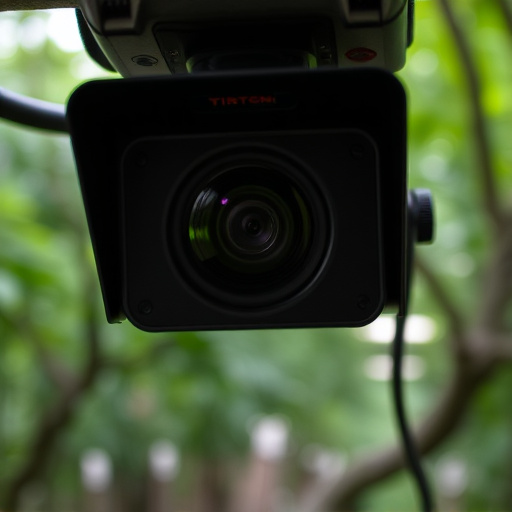Using small hidden cameras in nurseries requires a delicate balance between privacy protection and safety monitoring. Local laws and ethical considerations demand transparency, legitimate purposes (like child safety or staff training), and informed consent from parents, guardians, and employees. Discreet cameras with features like infrared night vision, motion sensors, high resolution, two-way audio, and cloud storage are ideal for remote monitoring. Strategically placed, these cameras—disguised as everyday objects—offer comprehensive coverage without compromising comfort or aesthetics. Advanced techniques, such as miniature designs and efficient compression, ensure high-quality covert recordings in sensitive nursery environments.
Uncover the art of discreet surveillance with our comprehensive guide on covert recording spot identification. In today’s world, ensuring safety and peace of mind in nursery environments is paramount. We explore legal and ethical considerations surrounding small hidden cameras, offering insights into their strategic placement for unnoticeable yet effective monitoring. From selecting the right equipment to advanced techniques enhancing audio-visual quality, this guide equips you with the knowledge to implement covert recording methods while adhering to key guidelines.
- Understanding Covert Recording: Legal and Ethical Considerations
- Choosing the Right Small Hidden Cameras for Nursery Environments
- Creative Placement Strategies for Unnoticeable Surveillance
- Advanced Techniques to Enhance Audio and Video Quality in Covert Recordings
Understanding Covert Recording: Legal and Ethical Considerations
Understanding Covert Recording involves recognizing the intricate balance between legal rights and ethical boundaries. When utilizing small hidden cameras, such as those considered for nursery settings, it’s crucial to be aware of local laws pertaining to privacy and surveillance. Many regions have strict regulations regarding consent, purpose, and disclosure of recorded content to ensure individual privacy is respected.
Ethical considerations come into play when employing covert recording methods. The use of hidden cameras should always prioritize transparency and legitimate objectives like child safety or staff training in nurseries. It’s essential to inform all parties involved—parents, guardians, employees—about the presence of surveillance equipment to maintain trust and avoid potential legal pitfalls stemming from hidden camera misuse.
Choosing the Right Small Hidden Cameras for Nursery Environments
When selecting small hidden cameras for nursery environments, the primary focus should be on discretion and quality. These cameras need to blend seamlessly into their surroundings while capturing clear, detailed footage without alerting parents or caregivers. Opt for compact cameras designed specifically for covert monitoring, featuring infrared lighting for night vision and motion sensors to activate recording only when necessary.
Size matters; tiny, unobtrusive cameras are less likely to be noticed by children or staff. Look for models that can be easily mounted in corners or tucked away in common areas like playrooms or nap zones. Additionally, consider camera quality; higher resolution ensures better footage for review and analysis. Features like two-way audio and cloud storage options enhance versatility and accessibility, allowing parents to stay connected while keeping an eye on their little ones.
Creative Placement Strategies for Unnoticeable Surveillance
In the quest for covert recording, especially in sensitive areas like nurseries, creative placement strategies are key to achieving unnoticeable surveillance. One approach involves integrating small hidden cameras for nursery environments—these discreet devices can be concealed within everyday objects, such as toys, books, or even fake fire alarms. By blending seamlessly into their surroundings, these cameras capture footage without raising suspicions.
For optimal results, consider the camera’s field of view and angle to ensure comprehensive coverage while maintaining secrecy. Placement near windows, doors, or in corners can provide valuable insights while remaining hidden from view. This strategic approach allows for continuous monitoring, offering peace of mind and ensuring the safety and well-being of infants and young children without compromising their environment’s comfort and aesthetics.
Advanced Techniques to Enhance Audio and Video Quality in Covert Recordings
In the quest for optimal covert recording quality, leveraging advanced techniques can significantly enhance audio and video clarity. One key method involves integrating small hidden cameras for nursery settings or other sensitive areas. These miniature devices, often disguised as everyday objects like books or fire alarms, capture high-resolution footage while remaining virtually undetectable. Combined with sophisticated audio capturing technology, they ensure both visual and auditory details are preserved, making post-recording analysis more effective.
Additionally, employing motion-activated recording features allows for energy conservation by activating cameras only when necessary, further enhancing covert capabilities. Advanced compression algorithms also play a crucial role in optimizing video quality while minimizing file sizes, facilitating easier storage and transmission without compromising visual integrity. These techniques collectively elevate the overall effectiveness of covert recordings, making them indispensable tools in various applications where discretion and high-quality evidence are paramount.
In conclusion, this guide has explored the art of covert recording spot identification, offering insights into legal and ethical considerations, the selection of suitable small hidden cameras for nursery environments, creative placement techniques, and advanced audio-visual enhancement methods. By understanding these aspects, parents and caregivers can ensure comprehensive surveillance while adhering to privacy standards, ultimately fostering a safer and more secure environment for children in nurseries.
